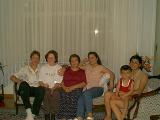
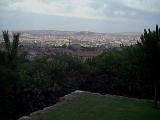
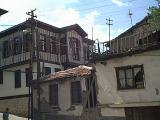
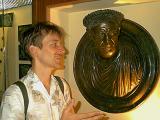
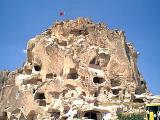
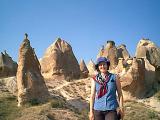
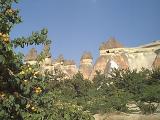
|
Ankara is a modern administrative city, founded by the father of the Turks, the legendary Atatuerk, whose face is visible at almost every corner of the streets. We make the same mistake again to book a hotel right next to a mosque (it is indeed fairly difficult to find a place which would not be close to a mosque) and are woken up at 4 o'clock in the morning by the prayer of the muezzin.
We visit a friend of ours, Birsen, now a lecturer at the University of Ankara for Russian and Armenian. Together we attend a traditional 'Beschneidungsfest', an important celebration in every boy's life. Being king of the evening, the boy is dressed in a blue officer like uniform and has to sit on a throne. Boys are cut between the age of 6 and 12, and the cutting is an important religious procedure applied to the poor boy in the same evening before the eyes of everyone! Afterwards, he will become a man. For the moment, the band is playing traditional dance music and the guests, approximately 200, are demonstrating their belly-dance capabilities. After the ceremony, the guests present gifts to the boy to honor his brave behavior.
Early in the morning, we leave the hotel to take a bus to Kappadokia. The city is already filled with people, mostly men, who gather at the corner of our hotel in large numbers to seek work. Painters, carpenters, and repairmen are present with their tools and can be hired for a day or even for a few hours if necessary. Remarkably, a number of shoe cleaners are already very busy with their work polishing their clients black leather shoes and chatting about the news of the day. With an unemployment rate of over 25%, the Eastern part of Turkey is struggling with its development and fast population growth.
In Kappadokia we dive into quite a different world, into the cradle of our civilization. Around 5000 years ago, nomadic people settled here to create the first cities, in caves or even under the earth. The cave dwellers dig their home into the remains of old volcanic tuff cone formations, some of which are several floors high. A few of them are still inhabited to this day. In Kapadokia, there are also about 30 underground cities, some of which had populations of over 100'000 and were built up to 200 m deep into the earth with irrigation and air circulation systems. The underground dwellings offered protection from the heat in the summer and the cold in the winter and were also used as a shelter against wild animals and enemies, as the entrance door was hidden and strongly fortified.
Everywhere we go we are still welcomed guests and potential buyers of the numerous products that are offered at every tourist site. So, we leave with a silver bracelet for Petra and a few Onyx cups that are made locally.
Eastward, the vegetation becomes ever more dry and hostile. In a bus without air-conditioning, we continue our way in the heat of Anatolia towards Erzurum and the Iranian border on roads that barely deserve their name, bumpy with inches deep holes or even unpaved. The villages and small cities along the way seem deserted and the region looks very poor. Indeed, most of the population, mostly farmers, has left their homeland in hope for a better work in Ankara or other big cities. There, people live in Gecekondu houses, poor dwellings built anywhere at the outskirts of the town. The Islamic law indeed allows everyone to build such a temporary home, as long as it is built within a day. With a little bit of preparation, and the help of several dozen friends, one can build indeed a respectable small concrete house even within one day. In the outskirts of large cities, about 60 % of all houses are built that way.
On the way to the Iranian boundary, our bus is stopped and searched several times by police and military. Curiously, most of the officers are only interested in the question whether Petra would speak any Turkish. After thorough passport examinations and no sign of Turkish words, the bus is left to go. One time, police just to demand a bottle of water stops the bus. These poor guys have to stand the summer heat (up to 40 C) in the middle of nowhere at the end of our civilization. Right at the border to Iran, the holiest of all mountains is greeting us: the Ararat, an ancient volcano more than 5000m high and covered with snow at its top. The Ararat is where the ark Noah is supposed to have stranded, but we haven't seen any signs of that.
At the Turkish/Iranian border, we have to walk the last mile at the Iranian boundary, as there is no through street for individual travelers. In the customs office we wait for an hour to have our passports stamped by the Turkish authorities. Soon afterwards, we move from the Turkish to the Iranian border posts, where Ayatollah Khomeinis face is greeting the visitors. The Iranian border posts looks much more organized and clean. Customs and passport inspections take a mere 10 minutes!
|
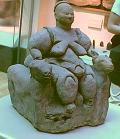
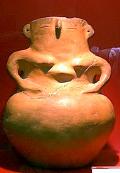
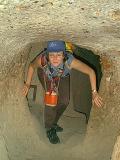
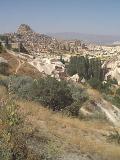
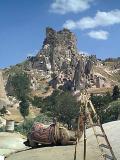
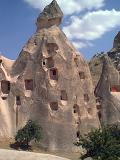
|